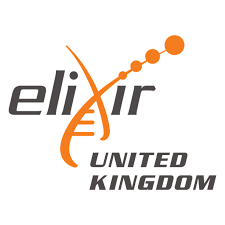GtoPdb is requesting financial support from commercial users. Please see our sustainability page for more information.
|
Synonyms: Angiocept® | BMS-844203 | BMS844203 | CT-322 | CT322
Compound class:
Peptide
Comment: Pegdinetanib (BMS-844203) was a clinical lead vascular endothelial growth factor receptor 2 (VEGFR2) inhibitor. It is an engineered, affinity-matured peptide derived from human fibronectin type III (FN3: residues 1424-1516) that binds to VEGFR2 [1,3]. The peptide is conjugated with polyethylene glycol (PEG) to increase its molecular size above the threshold for kidney-mediated clearance, and this effectively extends its circulating half-life [5]. Pegdinetanib was investigated for anti-angiogenic activity and its potential to inhibit vascularisation in tumours [2,4]. Pegdinetanib is an example of a peptide-based therapeutic that has utilised a novel scaffold (FN3) as an alternative to antigen receptors (antibodies).
Note that the PubChem CID for pegdinetanib (86278317) represents only the PEG moiety and not the entire peptide conjugate. Ligand Activity Visualisation ChartsThese are box plot that provide a unique visualisation, summarising all the activity data for a ligand taken from ChEMBL and GtoPdb across multiple targets and species. Click on a plot to see the median, interquartile range, low and high data points. A value of zero indicates that no data are available. A separate chart is created for each target, and where possible the algorithm tries to merge ChEMBL and GtoPdb targets by matching them on name and UniProt accession, for each available species. However, please note that inconsistency in naming of targets may lead to data for the same target being reported across multiple charts. ✖ |
| References |
|
1. Bloom L, Calabro V. (2009)
FN3: a new protein scaffold reaches the clinic. Drug Discov Today, 14 (19-20): 949-55. [PMID:19576999] |
|
2. Dineen SP, Sullivan LA, Beck AW, Miller AF, Carbon JG, Mamluk R, Wong H, Brekken RA. (2008)
The Adnectin CT-322 is a novel VEGF receptor 2 inhibitor that decreases tumor burden in an orthotopic mouse model of pancreatic cancer. BMC Cancer, 8: 352. [PMID:19038046] |
|
3. Getmanova EV, Chen Y, Bloom L, Gokemeijer J, Shamah S, Warikoo V, Wang J, Ling V, Sun L. (2006)
Antagonists to human and mouse vascular endothelial growth factor receptor 2 generated by directed protein evolution in vitro. Chem Biol, 13 (5): 549-56. [PMID:16720276] |
|
4. Mamluk R, Carvajal IM, Morse BA, Wong H, Abramowitz J, Aslanian S, Lim AC, Gokemeijer J, Storek MJ, Lee J et al.. (2010)
Anti-tumor effect of CT-322 as an adnectin inhibitor of vascular endothelial growth factor receptor-2. MAbs, 2 (2): 199-208. [PMID:20190562] |
|
5. Palm T, Esfandiary R, Gandhi R. (2011)
The effect of PEGylation on the stability of small therapeutic proteins. Pharm Dev Technol, 16 (5): 441-8. [PMID:21261458] |
|
6. Schiff D, Kesari S, de Groot J, Mikkelsen T, Drappatz J, Coyle T, Fichtel L, Silver B, Walters I, Reardon D. (2015)
Phase 2 study of CT-322, a targeted biologic inhibitor of VEGFR-2 based on a domain of human fibronectin, in recurrent glioblastoma. Invest New Drugs, 33 (1): 247-53. [PMID:25388940] |
|
7. Tolcher AW, Sweeney CJ, Papadopoulos K, Patnaik A, Chiorean EG, Mita AC, Sankhala K, Furfine E, Gokemeijer J, Iacono L et al.. (2011)
Phase I and pharmacokinetic study of CT-322 (BMS-844203), a targeted Adnectin inhibitor of VEGFR-2 based on a domain of human fibronectin. Clin Cancer Res, 17 (2): 363-71. [PMID:21224368] |






